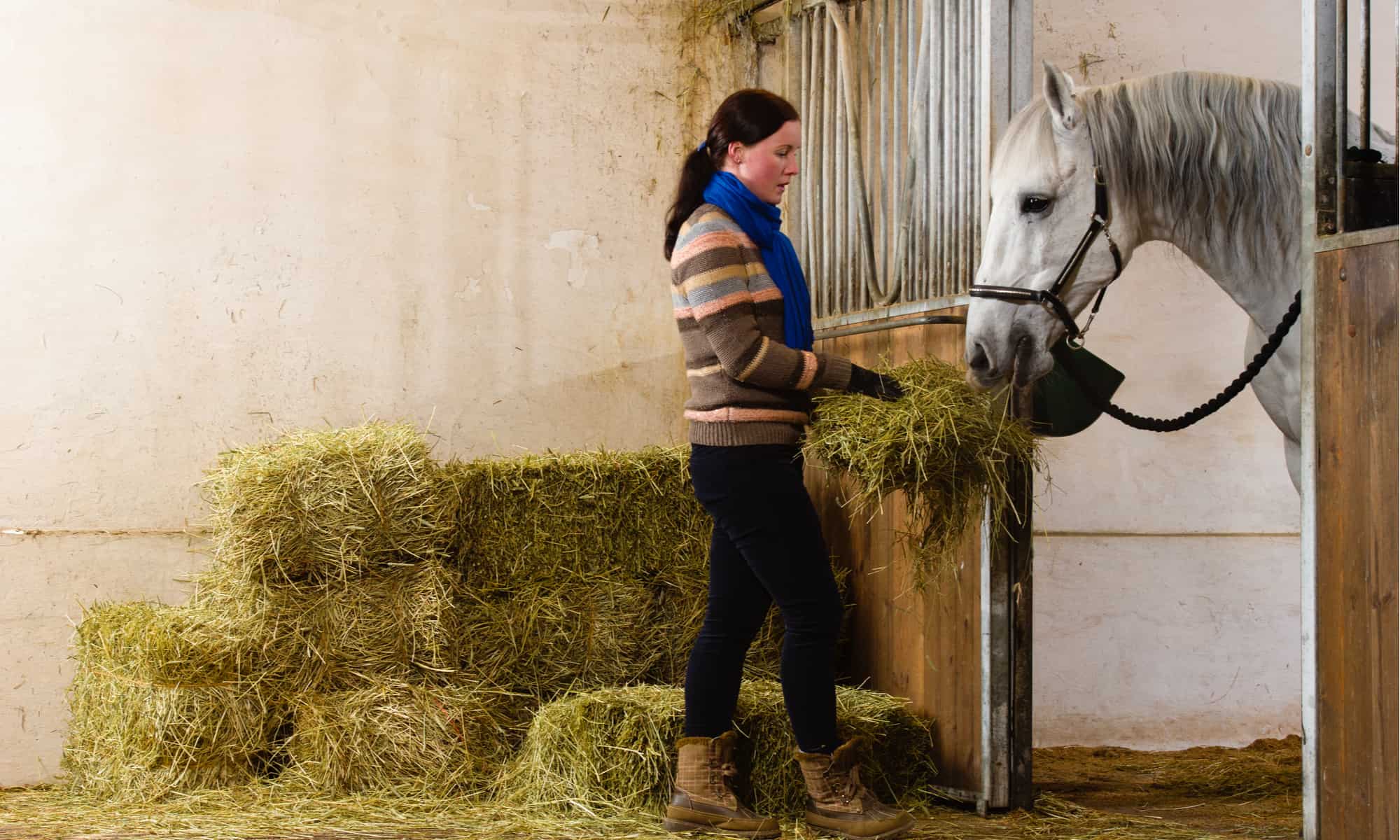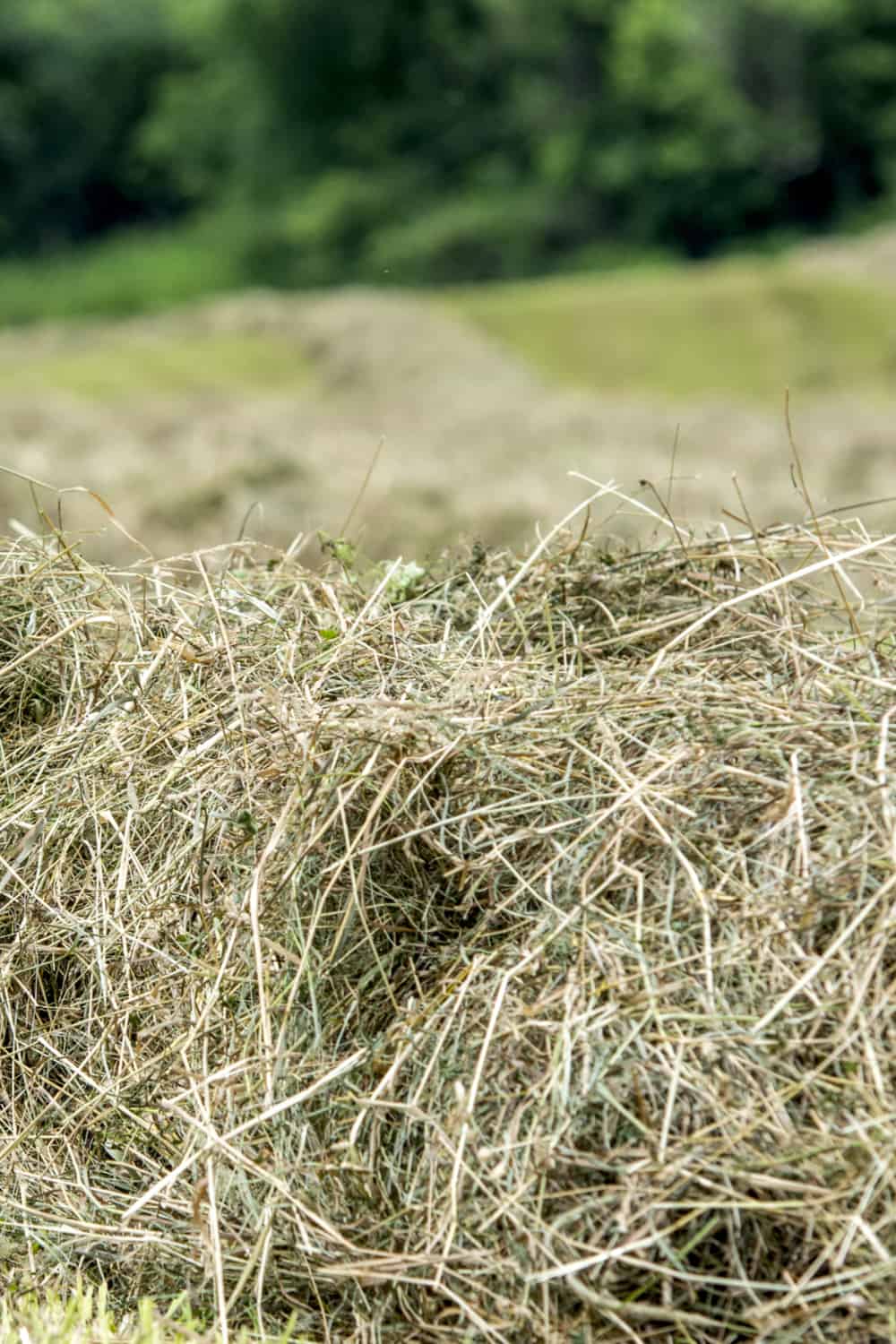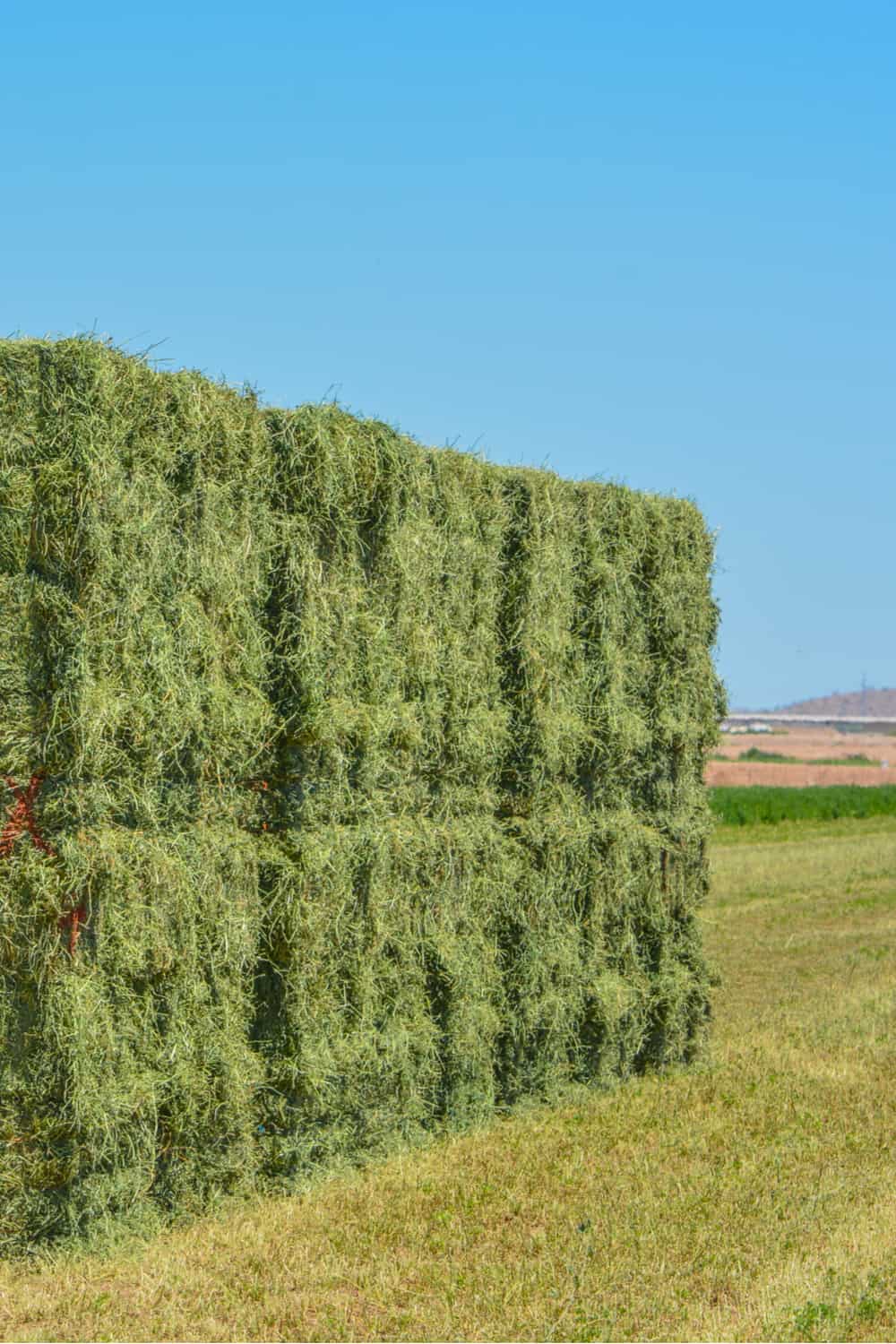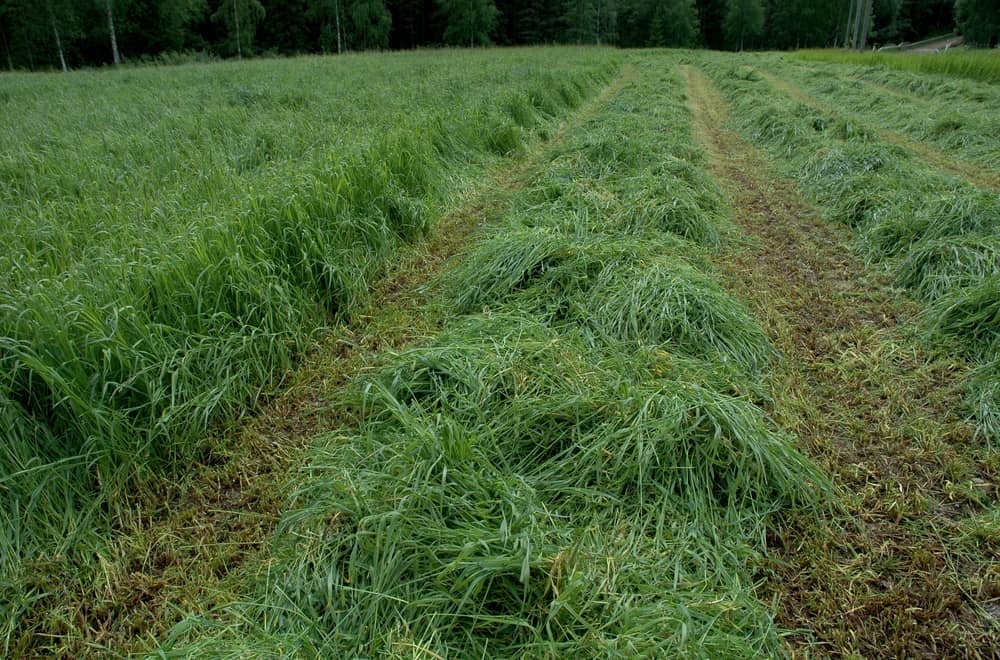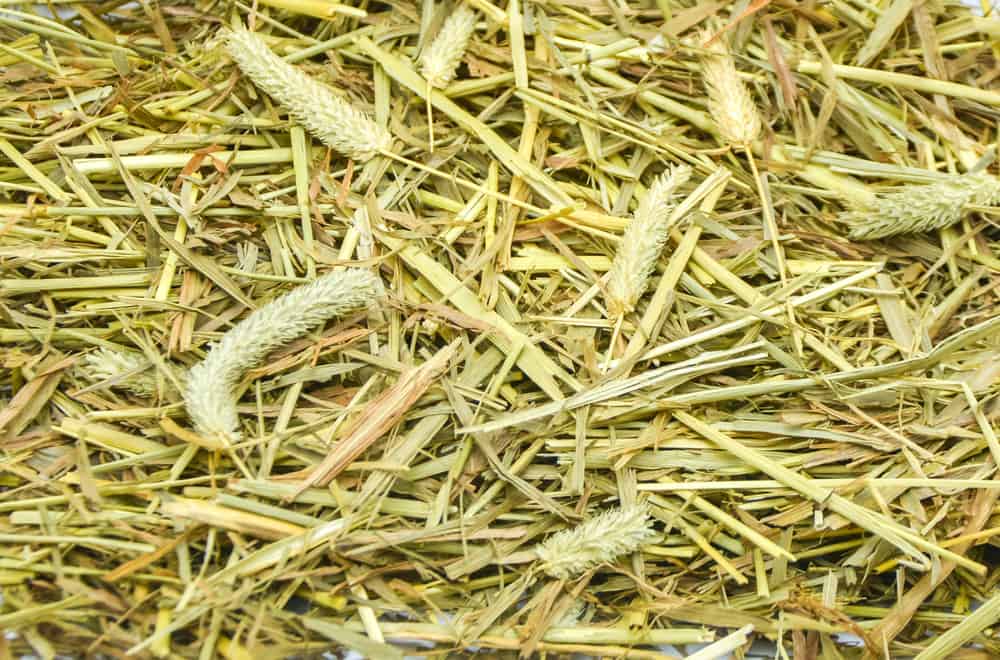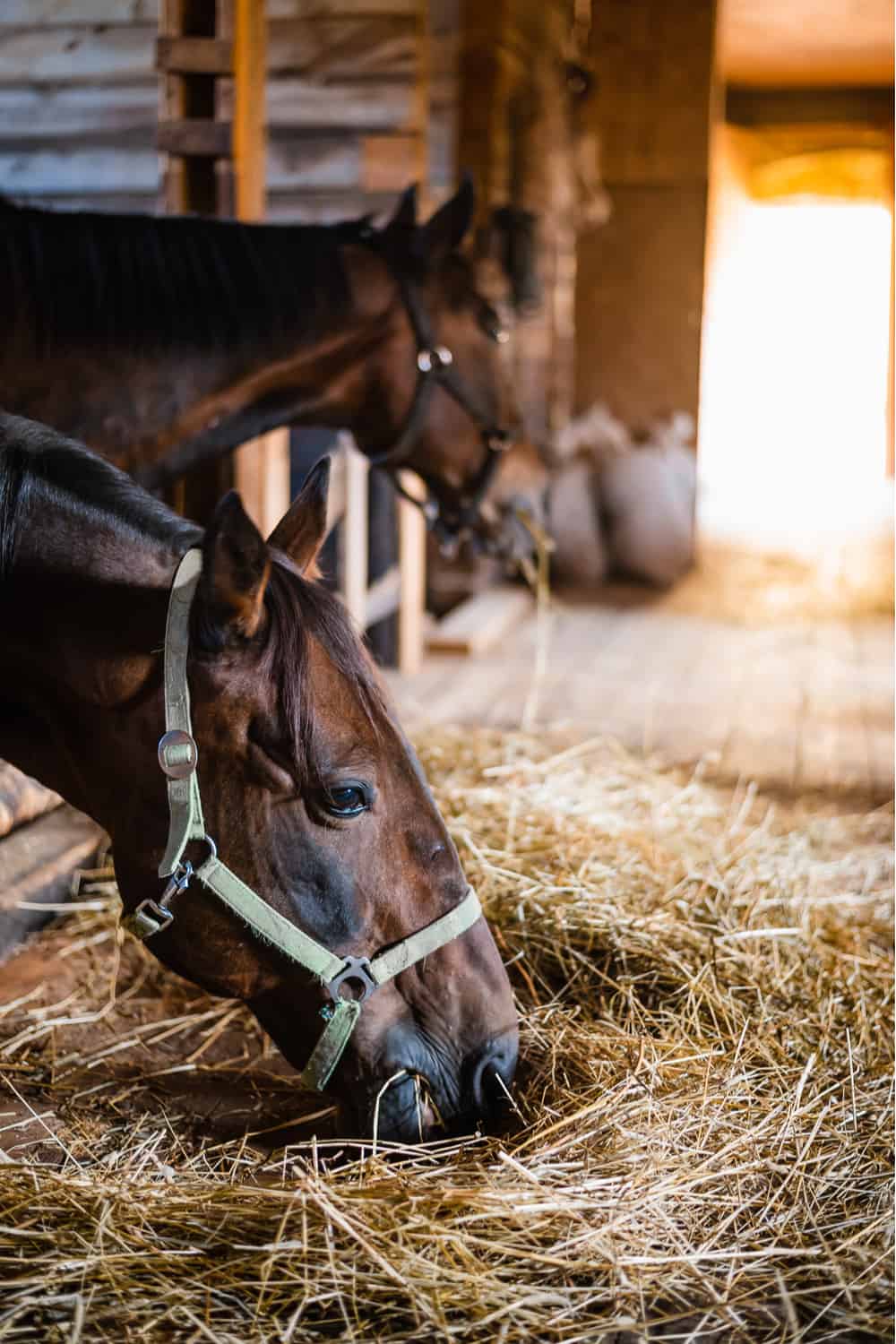As you seek to give your horse the best hay, is it hard for you to pick between Timothy hay and Alfalfa? What will make you know which one is best for your horses or any other pet?
Well, you are about to find out. Here, we’ll talk about Timothy hay vs. Alfalfa.
Many farmers use these types of feed to add more roughage and nutrients to the horse’s diet. But remember, these feeds have different uses.
Some farmers will tell you that Timothy hay doesn’t give enough nutrients. Others feel that Alfalfa can cause many problems.
So, to help you, we’ll break down every difference between the two feeds. Let’s first know some brief info on these feeds.
What is Timothy Hay?
If you are new to the world of animal feeds, Timothy hay comes from grass. The grass that makes this hay is long and with hollow stems. These stems can grow up to a height of 60 inches.
Also, the leaves of this grass can grow up to 17 inches. They have heads that can grow up to 3 to 6 inches long. Remember, the tops have many spikes that turn to flowers when they mature.
When making the Timothy hay, you’ll cut the grass while it’s green. After that, dry, then bale it.
The types of grass that people use to make Timothy hay grows on mountainsides and in meadows in the early days of spring. These grasses are also rough.
When your horse or rabbit feeds on this hay, it will add more roughage to the body. It also adds nutrients like proteins.
What is Alfalfa?
Unlike the Timothy hay, this hay comes from legumes. But the process of making the Alfalfa hay remains the same as that of the Timothy feed.
The best type of legume that helps in making this hay is Lucerne. Also, clover and peanut feeds can make Alfalfa hay. Lucerne is the best pick because you can get it in most places.
Since this legume has many proteins and minerals, it makes the Alfalfa hay a very high source of nutrients. Remember, the main difference between Alfalfa and Timothy hay is in the number of nutrients. This hay has more things to help your animal grow.
Also, different from Timothy hay, you’ll see more Alfalfa gains on an animal with milk. It’s because of many proteins.
Timothy Hay vs. Alfalfa – Comparison of the Features
These two types of hays can bring a big difference to your horse or pet. But remember, depending on what you want, one must be better than the other.
So, to know which one is better between the two, you should look at the specs. Read on to see what will help you separate the two feeds.
1. Nutrient Levels
The number of nutrients in each type of hay will make you pick the best hay between the two. Let’s start with the nutrients in the Timothy hay.
- Timothy Hay
Since Timothy hay mainly comes from grass, don’t expect it to have many nutrients. This feed has more fiber.
Expect your animal to get 8% of proteins but 32% of fiber content. Also, the ratio of calcium minerals to phosphorus is 2 to 1. So, if you want to give your horse, rabbits, or other animals more roughage, then you should pick on Timothy hay.
The high number of fibers will help the horse or animal to have better and smoother digestion. Expect this feed to reduce the risk of this animal getting colic disease.
These fibers will help the animals have strong teeth. Well, it comes from them chewing the rough fiber material.
Also, Timothy hay will give your horse lesser calories in the body. Well, it is because the oats and grass give it fewer carbs.
Timothy has a lesser amount of calcium than Alfalfa. So, if you want the bones and teeth of your horse to be strong, Timothy hay won’t be the better pick. But still, it can help make the bones of your horse look stronger.
When it comes to phosphorus, Timothy hay has the same percentage as the Alfalfa hay. Remember, too much phosphorus can affect the horse’s health.
- Alfalfa Hay
This hay has many things compared to Timothy hay. Expect your animals to get many proteins, power, and minerals from this feed. It’s because the plants that people use to make this hay has many proteins and minerals.
Expect this hay to have 16 to 20% of proteins. It also has a more calcium percentage than the Timothy hay.
The plants also make the animals have to eat the hay. Remember, the same won’t quickly happen to the Timothy hay.
Your animals will get high amounts of energy from this feed. It helps in making the horse run faster and do other heavy works. It’s not the same as the Timothy hay, which gives lesser carbs to the animals’ diet.
In the Alfalfa hay, your animal or pet will also get many vitamins. These are the things that will help the body have a better immune system.
Vitamins are things that will give the horse or other animal some excellent traits. Remember, you can’t get these things in a Timothy hay.
Also, with a higher calcium amount than Alfalfa, this feed will help the horse have muscles. The bones and teeth will also be strong.
Remember, the amount of calcium in a feed is essential to look at before buying the meal for your horse. But giving your animal too many legumes might make the nutrients in the body not balance well.
So, if you want to give your animal a balanced diet, you should go for the Alfalfa hay rather than the Timothy feeds. But if you use both Alfalfa and Timothy hay on your animal, it will get many nutrients and fiber for the gut. Remember to use it on horses, rabbits, cows, sheep, and many other animals.
2. The Looks
Not every hay will look the same. Well, the same applies to Timothy and Alfalfa hay. Let’s begin with the looks of Timothy hay.
- Timothy Hay
Expect to see the Timothy hay look like long grasses put together. The colors can range from pale green to light straw. It will depend on how old the hay is and the quality.
Also, if the hay is still young, it will smell like fresh grass from the fields. Well, the fresh smell can show that the grass can bring many benefits to the animal.
- Alfalfa Hay
Like many legumes, this type of hay has a deep green and bright color. Also, expect the hay to have many leafy stems. So, it will be easy to separate this hay from the Timothy hay because of the colors.
Don’t expect this hay to have a fresh smell like the Timothy hay. But even if they don’t have a fresh smell, the pale green color will help you know if the hay has an excellent quality.
3. Harvesting
These two hays have a pretty similar way of harvesting their materials. But still, some things are different among these two feeds. We’ll start with the Timothy hay.
- Timothy Hay
Most people harvest the grass for Timothy hay when the weather is dry and warm. The best grass that makes quality Timothy hay grow in areas with cool springs and dry summer times.
After cutting the grasses, people place them in windrows. It’s to allow the warm winds to dry the moisture in the hay.
Then it becomes easy to press the grass and bale them. Also, if you store hay without any moisture, it won’t have any issues with molds.
- Alfalfa Hay
The best time to harvest the materials to make the Alfalfa hay is at the start of spring. Well, it will depend on the place you live.
People who make the Alfalfa hay cut their fields many times at the start of the spring season. It’s because, during this time, the quality of nutrients is still high.
So, it shows that most legumes keep their nutrients at the stem and leaf. Also, the level of nutrients will help grade the quality of this hay while harvesting and making them. Remember, it’s beside the color and texture of the hay.
4. Costs
At this point, you now know how each of these hays can help your horse or animal. But the prices of the hays can make you change the view between the two types. Here’s how these hays cost.
A tractor supply can sell Timothy hay at $22 per 50lb. But it will be cheaper than the Alfalfa hay, which costs $20 per 50 lb. If you want a mix of Alfalfa and Timothy, it will be more affordable than the Timothy hay.
Conclusion
If you understand the differences between Timothy and Alfalfa hay, you’ll make the best choice of what feed you’d want for your horse. It’s easy to separate the two animals.
The alfalfa looks more like pale green legumes. But Timothy hay looks more like long grasses put together.
Alfalfa has more nutrients than the Timothy hay. With Timothy, your animal’s gut will be in a good state.
Even lesser number of nutrients, the Timothy hay is more costly than Alfalfa. Remember, what you’ll choose will depend on your horse’s needs.
Have you now understood the difference between Alfalfa and Timothy hay? Which one seems to fit your horse’s needs or is best for you? Please share your thoughts with us.
